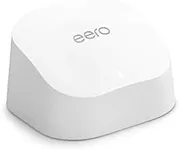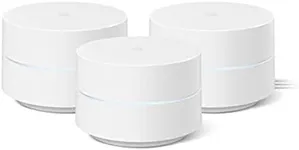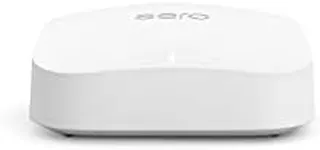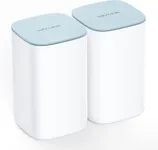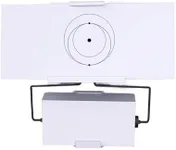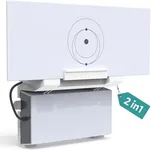Buying Guide for the Best Wifi Extenders
Choosing the right Wi-Fi extender can make a huge difference in how well your devices connect to the internet, especially in larger homes or places where the Wi-Fi signal doesn’t reach every corner. The goal is to improve your wireless coverage so you can enjoy fast and uninterrupted connection throughout your space. When looking for a Wi-Fi extender, it’s important to think about the size of your area, what kinds of devices you use, and the type of activities you do online, like streaming, gaming, or attending video calls. Understanding the main features will help you identify which extender will fit your needs best.Wi-Fi StandardWi-Fi standards refer to the technology used by the extender to communicate, with common standards being Wi-Fi 4 (802.11n), Wi-Fi 5 (802.11ac), and Wi-Fi 6 (802.11ax). Each new generation is faster and more efficient at handling multiple devices. Wi-Fi 4 is basic and works for simple browsing or small homes, Wi-Fi 5 offers better speeds and is good for HD streaming and gaming, while Wi-Fi 6 is the newest and best at supporting lots of devices and fast connections. If you have a modern router and several devices, choosing an extender that matches your router’s standard can give you the most seamless upgrade.
Coverage AreaThis spec tells you the maximum area (usually described in square feet or the number of rooms) the extender can handle. Entry-level extenders add coverage to a single room or small space, mid-range models cover larger apartments or multiple rooms, and high-end units can reach big houses or multi-level areas. To find the right fit, think about where your signal drops off and choose a model that covers the spaces you actually use so that you’re not paying for more than you need, but also not left with ‘dead zones’.
Number of BandsWi-Fi extenders can be either single-band (2.4 GHz), dual-band (2.4 GHz and 5 GHz), or even tri-band in higher-end cases. Single-band extenders are straightforward but may get slower if lots of devices are connected. Dual-band models can switch between bands to reduce congestion, helping devices get faster and more reliable connections, while tri-band adds even more capacity for busy homes. If you only browse or check email, single-band may be enough, but if you stream videos, have smart home devices, or game, dual- or tri-band is preferable.
Ethernet PortsSome Wi-Fi extenders offer Ethernet ports, which let you connect wired devices like desktop computers, smart TVs, or gaming consoles directly for a more stable and faster connection. The number and speed (such as Fast Ethernet or Gigabit) of the ports matter if you need to set up wired connections. If you plan to use the extender mainly for wireless improvement, the ports may not matter much, but for high-speed gaming or work setups where stability is important, having at least one Ethernet port is useful.
Compatibility & SetupIt’s important that your Wi-Fi extender works smoothly with your current router. Most modern extenders are universal and work with any router, but features like WPS (Wi-Fi Protected Setup) can make installation easier by allowing a one-button connection. If you’re not tech-savvy or want a hassle-free setup, look for extenders that promise ‘easy setup’ or app-based instructions. If you have a router with certain features (like mesh capability), matching those can further improve reliability and coverage.
Speed RatingWi-Fi extenders are given speed ratings in Mbps or Gbps, indicating the maximum speed the device can handle. Basic models offer lower speeds, suitable for browsing and email; mid-range options handle activities like HD streaming; while the highest speeds are suitable for 4K streaming, gaming, or multiple heavy users. Your ideal speed depends on your internet plan and what you do online — it’s pointless to get a high-speed extender if your internet connection is slower than what the extender can provide.
